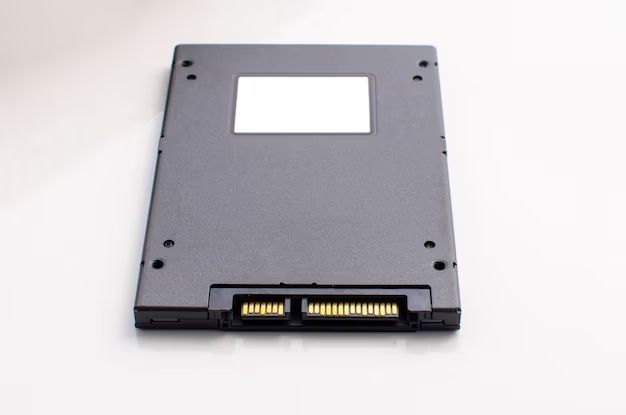There are a few types of storage drives that contain both solid state storage and traditional spinning hard disks. The most common are hybrid drives and dual-drive storage systems.
Hybrid Drives
Hybrid drives, sometimes called SSHDs (solid state hybrid drives), contain both flash-based solid state storage and a traditional hard disk drive. The flash storage acts as a cache, storing frequently accessed data for faster access. The hard disk provides more storage capacity at a lower cost per gigabyte.
Hybrid drives combine these two storage technologies into a single drive. They aim to provide some of the performance benefits of solid state drives while also offering the large storage capacity of mechanical hard disks. The most common capacities for hybrid drives range from 500GB to 2TB.
The solid state portion of a hybrid drive is generally fairly small, often just 8GB to 32GB. This acts as a cache for the most frequently accessed data. The onboard controller will monitor data access patterns and move data between the solid state and mechanical portions as needed.
For example, frequently accessed operating system and application files may be stored in the flash storage for low-latency access. Less commonly used data like media files and documents can be stored on the hard drive portion. Some hybrid drives will also store a copy of this frequently used data on both the solid state and hard disk portions.
Hybrid drives work invisibly to the operating system and applications. They appear as a single drive and the caching algorithms work automatically to shuttle data between the solid state and mechanical sections. Most are designed to be drop-in replacements for traditional hard drives.
Some advantages of hybrid drives include:
- Faster boot times and launch times for commonly used programs
- Lower cost per gigabyte than full solid state drives
- Improved read/write speeds over traditional hard drives
- Automatic caching algorithms to optimize performance
- High storage capacities available
Some limitations of hybrid drives include:
- Slower than full solid state drives for some workloads
- Small solid state portion limits performance gains
- Lower performance gains for random workloads
- Caching algorithms not always optimized for specific user workloads
Overall, hybrid drives can offer a nice midpoint between pure solid state and pure mechanical storage. For consumer systems where cost is a concern but some solid state performance gains are desired, hybrid drives are a popular option.
Dual-Drive Storage Systems
Another option that combines solid state storage and hard disks is a dual-drive storage system. As the name suggests, these contain separate solid state and mechanical drives built into a single enclosure.
Dual-drive systems are commonly found in higher-end desktop PCs and laptops. For example, a gaming PC may come configured with a 250GB SSD for the operating system and applications, along with a 2TB hard drive for user files and games. The two drives connect inside the computer but appear as separate logical drives to the operating system.
Some key advantages of dual-drive storage configurations include:
- Accommodate different storage needs – fast SSD for OS and apps, high capacity HDD for data
- Flexibility to customize the mix of solid state vs mechanical storage
- Avoid duplicating data between solid state and mechanical tiers like in hybrid drives
- Full solid state performance for key workloads on dedicated SSD
Dual storage is more commonly used in higher-end systems where there is ample space and the budget for multiple drives. The tradeoff is added complexity for managing separate drives compared to the automation of hybrid drives.
Other Examples
There are a few other examples of drives that incorporate both solid state and mechanical storage, although they are less common than hybrid drives and dual-drive setups.
Some portable external hard drives use a small amount of flash memory as a cache alongside the main mechanical portion. This aims to improve transfer speeds when the drive is connected to a computer.
A few server-focused storage devices also combine solid state and mechanical storage. EMC V Flash, NetApp Flash Pool and certain products from HP store frequently accessed data on flash while colder data goes on HDDs.
Some additional options include:
- Boot drives with SSD caches for fast boot alongside larger mechanical storage
- RAID controllers with SSD caching for hard disk volumes
- ZFS hybrid storage pools combining flash and HDD vdevs
Comparison of Options
| Type | Flash Storage | Hard Disk Storage | Advantages | Disadvantages |
|---|---|---|---|---|
| Hybrid Drive | Small integrated SSD cache | Primary capacity | Simple installation, automated tiering | Lower SSD performance, fixed tiers |
| Dual Drive | Dedicated SSD volume | Dedicated HDD volume | Custom tiers, full SSD speed | Manual data management |
| External HDD w/ Flash | Small SSD cache | Primary external capacity | Improved transfer speed | Very small SSD portion |
Conclusion
The most popular options for combining solid state and hard disk storage are hybrid drives and dual-drive setups. Hybrid drives integrate a small SSD cache with a traditional hard disk into a single logical volume. Dual-drive configurations utilize separate SSD and HDD volumes in a single enclosure.
Hybrid drives provide automated tiering and easy installation, while dual-drive allows more customization and full SSD speeds for key workloads. Both aim to balance price, performance and capacity using a mix of storage technologies.
A few other methods like external drive caches and enterprise tiered storage also incorporate flash alongside mechanical disks. Overall, hybrid and dual-drive solutions offer consumers a flexible way to gain some of the speed of solid state while still having massive mechanical capacities for data.

